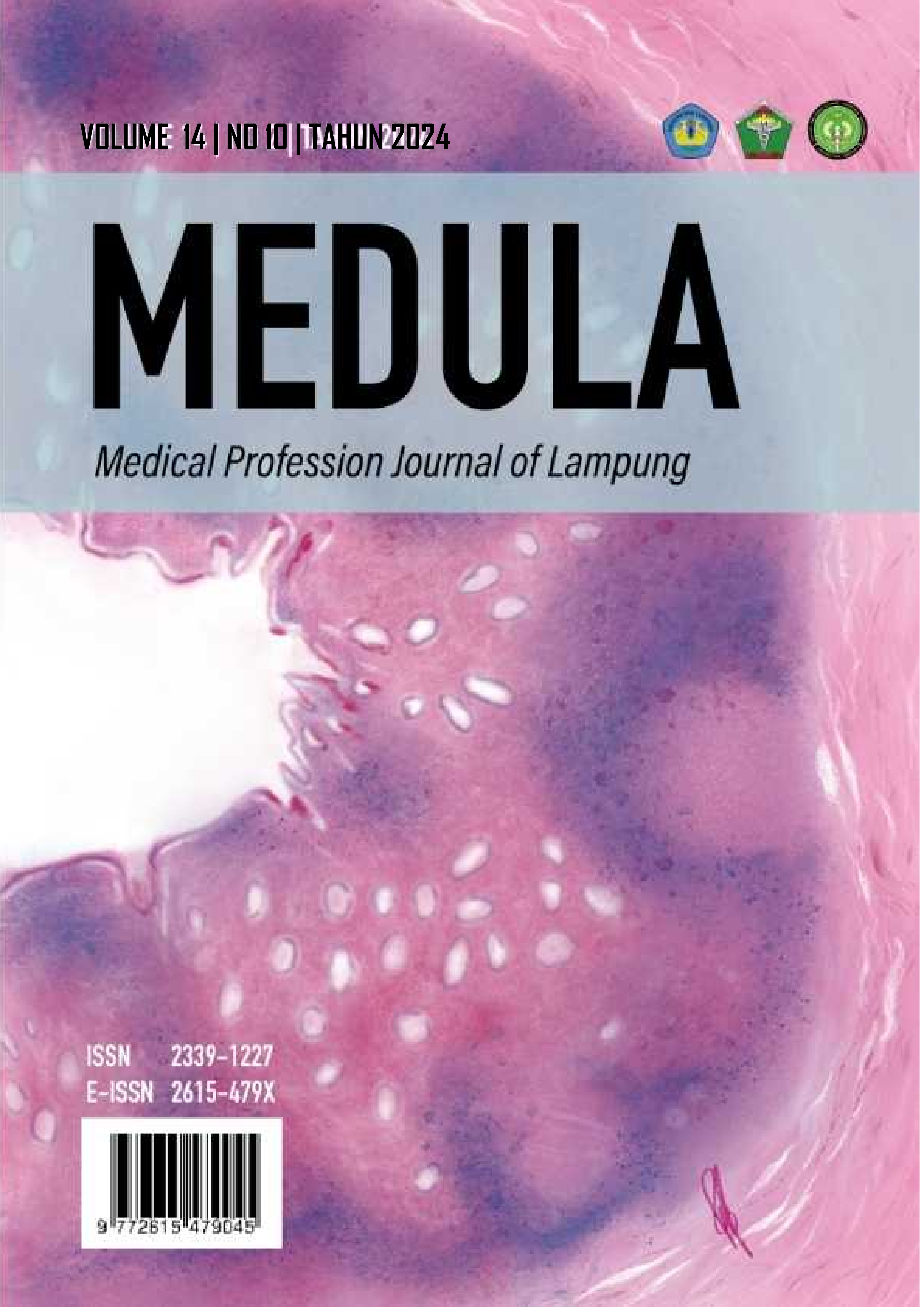Cystatine C as Biomarker of Kidney Function: Literature Review
DOI:
https://doi.org/10.53089/medula.v14i10.1410Keywords:
eGFR, Cystatin C, Kidney FunctionAbstract
Kidneys are the primary organs responsible for the excretion of metabolic waste products. Glomerular Filtration Rate (GFR) serves as a critical parameter for assessing renal function, with serum creatinine traditionally utilized as the primary biomarker. However, the accuracy of creatinine-based assessments is limited by its susceptibility to external variables, including age, sex, muscle mass, and dietary intake. These factors can lead to variability in results and reduce diagnostic precision. To overcome these limitations, cystatin C (CysC) has gained prominence as a superior alternative biomarker. Unlike creatinine, serum CysC levels are minimally influenced by external factors, offering greater stability and sensitivity in detecting acute kidney injury (AKI), chronic kidney disease (CKD), and other renal impairments such as diabetic nephropathy. Cystatin C provides notable advantages in the reclassification of CKD stages, particularly in cases where GFR measurements are borderline. CysC has demonstrated superior reliability over creatinine in predicting complications such as delayed graft function (DGF), a condition often necessitating hemodialysis. Preoperative measurement of CysC levels is instrumental in predicting long-term renal function and identifying patients at elevated risk for adverse outcomes. Elevated serum CysC concentrations in patients with renal cell carcinoma (RCC) have been correlated with poorer prognoses and an increased likelihood of postoperative renal injury. Despite its clinical advantages, the routine adoption of CysC is constrained by certain limitations. Chief among these is the significantly higher cost of CysC assays compared to traditional creatinine tests, which restricts its widespread application to confirmatory diagnostics or complex clinical scenarios.
References
Gounden V, Bhatt H, Jialal I. Renal Function Test. Treasure Island (FL) : Statpearl Publishing; 2023.
Onopiuk A, Tokarzewicz A, Gorodkiewicz E. Cystatin C. In: ; 2015:57-69. doi:10.1016/bs.acc.2014.11.007
Pottel H, Delanaye P, Cavalier E. Exploring Renal Function Assessment: Creatinine, Cystatin C, and Estimated Glomerular Filtration Rate Focused on the European Kidney Function Consortium Equation. Ann Lab Med. 2024;44(2):135-143. doi:10.3343/alm.2023.0237
Xu Y, Ding Y, Li X, Wu X. Cystatin C is a disease‐associated protein subject to multiple regulation. Immunol Cell Biol. 2015;93(5):442-451. doi:10.1038/icb.2014.121
Legrand H, Werner K, Christensson A, Pihlsgård M, Elmståhl S. Prevalence and determinants of differences in cystatin C and creatinine-based estimated glomerular filtration rate in community-dwelling older adults: a cross-sectional study. BMC Nephrol. 2017;18(1):350. doi:10.1186/s12882-017-0759-3
KDIGO. KDIGO 2024 Clinical Practice Guideline for the Evaluation and Management of Chronic Kidney Disease. Kidney Int Suppl (2011). 2024;105(4):136-137. doi:10.1016/s0085-2538(24)00110-8
Chen DC, Potok OA, Rifkin D, Estrella MM. Advantages, Limitations, and Clinical Considerations in Using Cystatin C to Estimate GFR. Kidney360. 2022;3(10):1807-1814. doi:10.34067/KID.0003202022
Ferguson TW, Komenda P, Tangri N. Cystatin C as a biomarker for estimating glomerular filtration rate. Curr Opin Nephrol Hypertens. 2015;24(3):295-300. doi:10.1097/MNH.0000000000000115
Fleming S, Perera-Salazar R, Taylor KS, et al. Frequency of Renal Monitoring - Creatinine and Cystatin C (FORM-2C): an observational cohort study of patients with reduced eGFR in primary care. Br J Gen Pract. 2021;71(710):e677-e684. doi:10.3399/BJGP.2020.0940
Zhou C, Chen Y, He X, Xue D. The value of cystatin C in predicting perioperative and long-term prognosis of renal transplantation. Scand J Clin Lab Invest. 2022;82(1):1-5. doi:10.1080/00365513.2021.1989714
Hassan M, Aboelnaga MM, Al-arman M, Hatata EZ. Urinary cystatin C as a biomarker of early renal dysfunction in type 2 diabetic patients. Diabetes & Metabolic Syndrome: Clinical Research & Reviews. 2021;15(4):102152. doi:10.1016/j.dsx.2021.05.025
Guo K, Chen Q, He X, et al. Expression and significance of Cystatin-C in clear cell renal cell carcinoma. Biomedicine & Pharmacotherapy. 2018;107:1237-1245. doi:10.1016/j.biopha.2018.08.083
Wenzel M, Yu H, Uhlig A, et al. Cystatin C predicts renal function impairment after partial or radical tumor nephrectomy. Int Urol Nephrol. 2021;53(10):2041-2049. doi:10.1007/s11255-021-02957-w
Li R, Wang X, Zhao X, et al. Cystatin C level is associated with the recovery of renal function in cancer patients after onset of acute kidney injury. Ann Palliat Med. 2021;10(2):2158-2166. doi:10.21037/apm-21-191
Downloads
Published
How to Cite
Issue
Section
License
Copyright (c) 2025 Medical Profession Journal of Lampung

This work is licensed under a Creative Commons Attribution-ShareAlike 4.0 International License.














